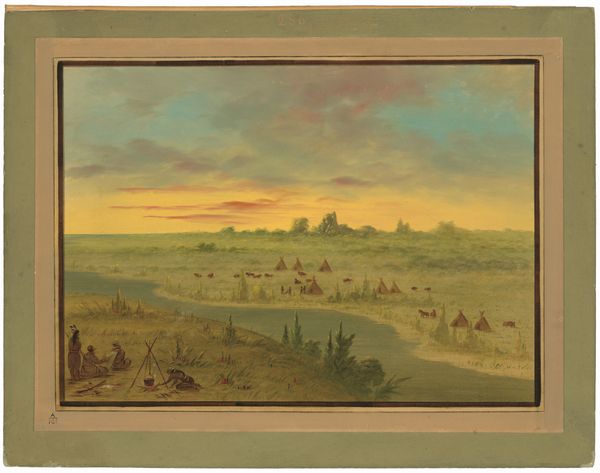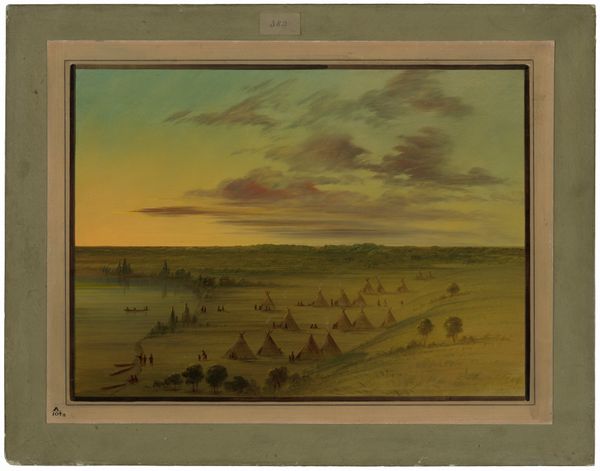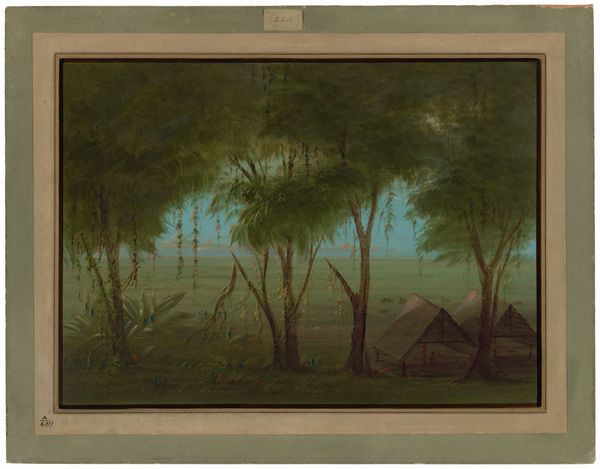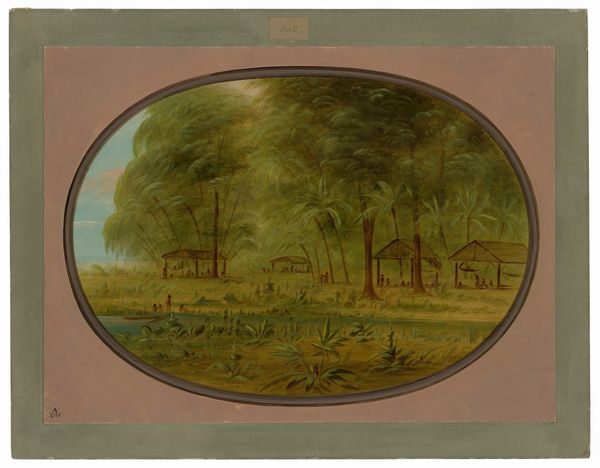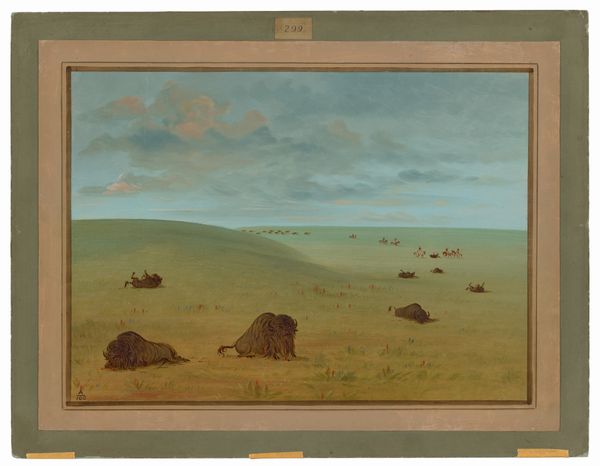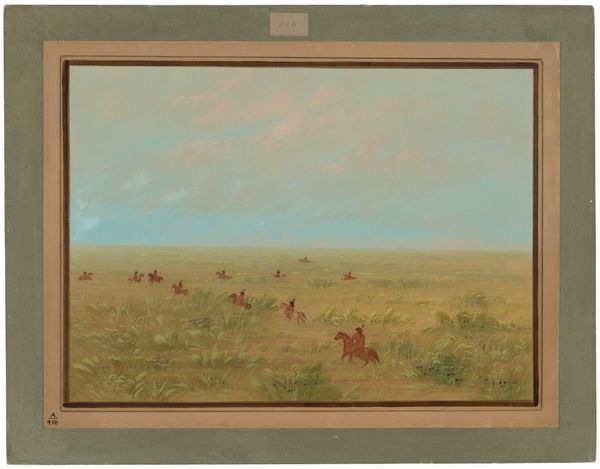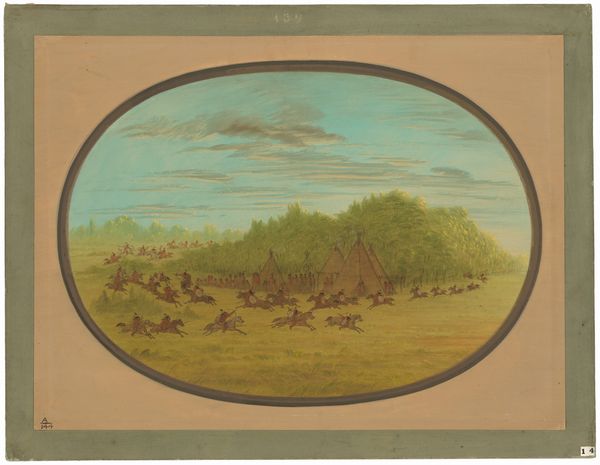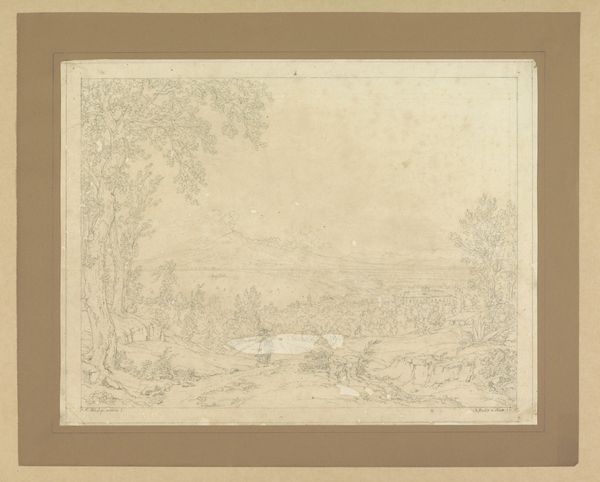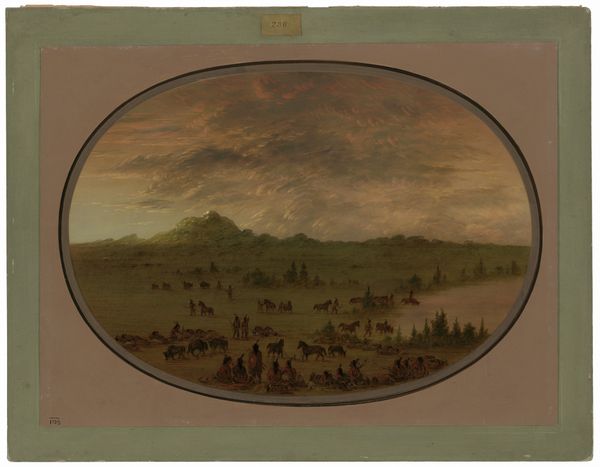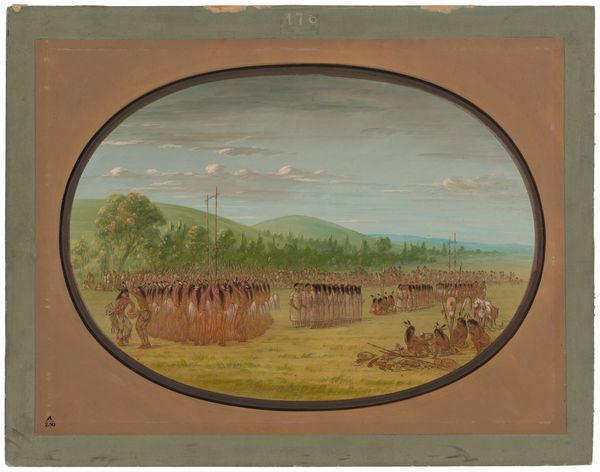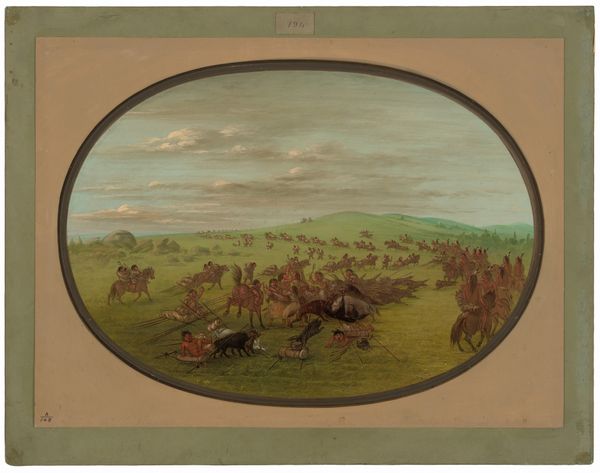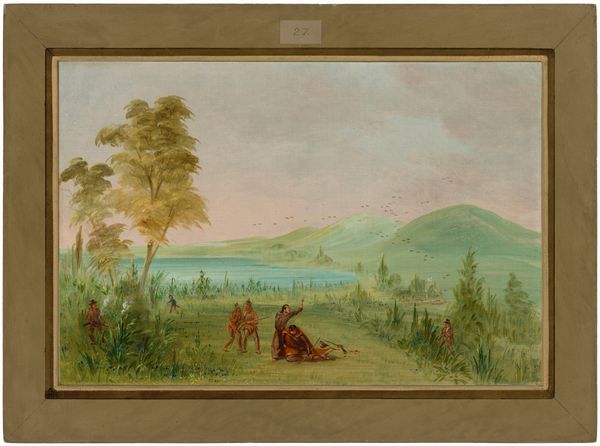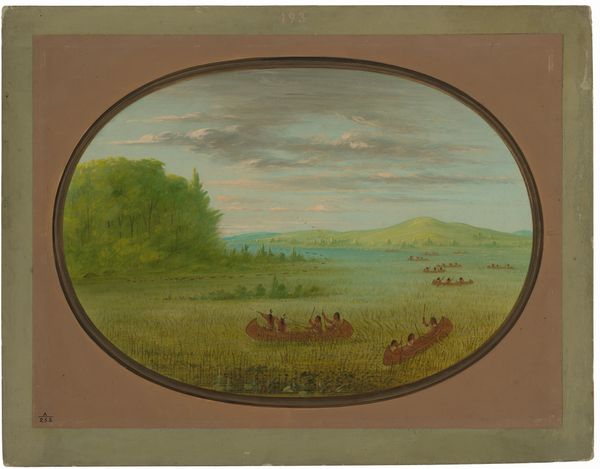
painting
#
water colours
#
painting
#
landscape
Dimensions: overall: 46.2 x 62.9 cm (18 3/16 x 24 3/4 in.)
Copyright: National Gallery of Art: CC0 1.0
Curator: George Catlin's "Mired Buffalo and Wolves," likely created between 1861 and 1869, captures a moment of intense natural struggle in the American West. Catlin employs watercolor to bring this scene to life. Editor: Wow, my first thought? What a mess. Total chaos and panic. It makes my stomach clench just looking at it, all that mud and those hungry eyes. Curator: The painting's subject allows for a critical look at environmental transformation and its effects. The relationship between humans, animals, and the land during westward expansion, certainly wasn’t a balanced one. How do we understand this conflict between species? Editor: I see it as primal, you know? Pure survival mode. Those wolves aren’t thinking about environmental politics; they're just trying to eat. That poor buffalo stuck in the mud, those others in the distance – you feel their exhaustion, their vulnerability. It's nature, raw and unforgiving, even pretty cruel, I think. Curator: And Catlin presents this moment through the lens of Indigenous Americas art, giving us a particular vantage point on these ecological dramas. Consider the indigenous relationships with both buffalo and wolves. It goes beyond mere documentation into themes of respect, predation, and natural balance. Editor: Right! There's this feeling of witnessing something sacred, or at least something profoundly real. The artist gets down into the dirt, so to speak, and doesn't hold back. You can almost smell the wet fur and feel the mud squishing under your own feet, gross as it is! Curator: Catlin's style walks the line between realism and something else. This depiction challenges assumptions about civilization, progress, and man's relationship to nature. Who are the real intruders here, and what constitutes true balance? Editor: Hmm, that's a lot to unpack, isn’t it? Maybe this painting’s a reminder that even in the wildest landscapes, life's just a tightrope walk. Curator: I agree. The power dynamics, ecological damage, and inevitable struggle are central to Catlin’s historical statement, and it begs us to consider those relationships as we move into the future. Editor: Yeah. I started out thinking this was just about some muddy buffalo and hungry wolves, but I'm realizing it’s about something a whole lot bigger – like, our place in this whole tangled-up world.
Comments
No comments
Be the first to comment and join the conversation on the ultimate creative platform.
